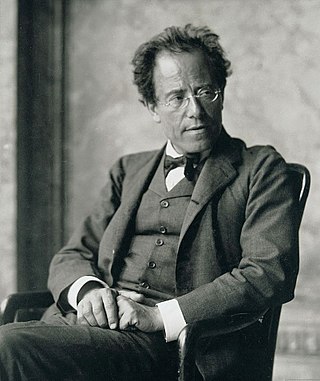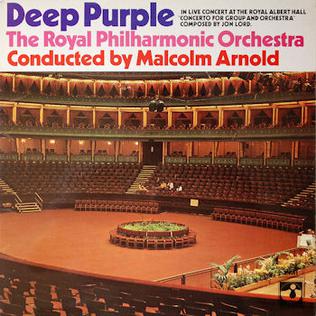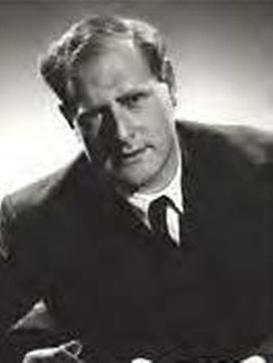Description
The piece is in four movements:
The Symphony No. 1 in C major by Mily Balakirev was commenced as early as 1864, but was not completed until 1898. It is scored for three flutes (the third doubling piccolo), oboe, English horn, three clarinets (switching between B flat and A instruments), two bassoons, four horns, two trumpets, three trombones, tuba, timpani, triangle, cymbals, snare drum, bass drum, two harps, [1] first and second violins, violas, cellos and double basses.
Balakirev revised the symphony but the publisher Zimmerman does not mark the printing of the second version as different, and scores and parts of the two versions were sometimes mixed up. [2] One way to tell them apart is that the first version has rehearsal figures going up to 15, 10, 7, and 16 but in the second version they go to 26, 14, 14, 26. [3] The more obvious textual changes occur in the third movement. [4]
The piece is in four movements:
Sketching began in 1864 but the first performance, with Balakirev himself conducting, did not take place until 1898. In 1949, Herbert von Karajan recorded it with the Philharmonia Orchestra. In December 1955, Sir Thomas Beecham and the Royal Philharmonic Orchestra made the first stereo recording in the U.K..
There is also a recording of a concert performance with Beecham conducting the BBC Symphony Orchestra. Yevgeny Svetlanov recorded it in 1971, with the USSR Symphony Orchestra. It was later recorded digitally by Neeme Järvi for EMI Classics. A modern recording by the Russian State Symphony Orchestra, conducted by Igor Golovschin, is also available, as well as one from the BBC Philharmonic Orchestra with Vassily Sinaisky as conductor.

The Royal Philharmonic Orchestra (RPO) is a British symphony orchestra based in London, that performs and produces primarily classic works.

The Symphony No. 10 in F-sharp major by Gustav Mahler was written in the summer of 1910, and was his final composition. At the time of Mahler's death, the composition was substantially complete in the form of a continuous draft, but not fully elaborated or orchestrated, and thus not performable. Only the first movement is regarded as reasonably complete and performable as Mahler intended. Perhaps as a reflection of the inner turmoil he was undergoing at the time, the 10th Symphony is arguably his most dissonant work.

The Symphony No. 1 in E minor, Op. 39, by Jean Sibelius is a symphony started in 1898, and finished in early 1899, when Sibelius was 33. The work was first performed on 26 April 1899 by the Helsinki Orchestral Society, conducted by the composer, in an original version which has not survived. After the premiere, Sibelius made some revisions, resulting in the version performed today. The revised version was completed in the spring and summer of 1900, and was first performed in Berlin by the Helsinki Philharmonic, conducted by Robert Kajanus on 1 July 1900.

Concerto for Group and Orchestra is a live album by Deep Purple and the Royal Philharmonic Orchestra conducted by Malcolm Arnold, recorded at the Royal Albert Hall, London, in September 1969. It consists of a concerto composed by Jon Lord, with lyrics written by Ian Gillan. This is the first full length album to feature Ian Gillan on vocals and Roger Glover on bass. It was released on vinyl in December 1969. The original performance included three additional Deep Purple songs, "Hush", "Wring That Neck", and "Child in Time"; these were included on a 2002 release. This was the last Deep Purple album distributed in the US by Tetragrammaton Records, which went defunct shortly after.

The Symphony No. 2 in D major, Op. 43, by Jean Sibelius was started in winter 1901 in Rapallo, Italy, shortly after the successful premiere of the popular Finlandia, and finished in 1902 in Finland. Sibelius said, "My second symphony is a confession of the soul."
The Young Person's Guide to the Orchestra, Op. 34, is a 1945 musical composition by Benjamin Britten with a subtitle Variations and Fugue on a Theme of Purcell. It was based on the second movement, "Rondeau", of the Abdelazer suite. It was originally commissioned for the British educational documentary film called Instruments of the Orchestra released on 29 November 1946, directed by Muir Mathieson and featuring the London Symphony Orchestra conducted by Malcolm Sargent; Sargent also conducted the concert première on 15 October 1946 with the Liverpool Philharmonic in the Philharmonic Hall, Liverpool, England.

Norman René Del Mar CBE was a British conductor, horn player, and biographer. As a conductor, he specialised in the music of late romantic composers; including Edward Elgar, Gustav Mahler, and Richard Strauss. He left a great legacy of recordings of British music, in particular Elgar, Ralph Vaughan Williams, Frederick Delius, and Benjamin Britten. He notably conducted the premiere recording of Britten's children's opera Noye's Fludde.
The Symphony No. 3 by Arnold Bax was completed in 1929. It was dedicated to Sir Henry Wood and is perhaps the most performed and most immediately approachable of Bax's symphonies.
The Piano Concerto No. 1, Sz. 83, BB 91 of Béla Bartók was composed in 1926. Average playing time is between 23 and 24 minutes.
In Autumn, Op. 11, is a concert overture written by Edvard Grieg in 1865.

The Symphony No. 2 in F minor was written by Richard Strauss between 1883 and 1884. It is sometimes referred to as just Symphony in F minor. He gave it the Opus number 12, and it also appears in other catalogues as TrV 126 and Hanstein A.I.2. It is not listed in von Asow's catalog.
The Symphony No. 2 in D-flat major, Opus 30, W45, "Romantic", was written by Howard Hanson on commission from Serge Koussevitzky for the 50th anniversary of the Boston Symphony Orchestra in 1930, and published by Carl Fischer Music.

Belshazzar's Feast, JS 48, is incidental music by Jean Sibelius to a play of the same name by the journalist, poet and playwright Hjalmar Fredrik Eugen Procopé (1868−1927).
Benjamin Britten's Piano Concerto, Op. 13, is the composer's sole piano concerto.
The Symphony No. 1 in D minor, Op. 9, was completed by Ernő Dohnányi in 1901, when the composer was 24. It was his second venture into orchestral writing, his Symphony in F written in 1896 was not published. The symphony in D minor was premiered in January 1902 in Manchester, England, under the baton of Hans Richter. The Hungarian premiere followed in 1903. Although audibly influenced by the prevailing voices of the time, including Bruckner, Strauss, Tchaikovsky, Wagner, Mahler and Brahms, the work nonetheless demonstrates a formidable handling of complex compositional techniques and is a notable precursor to what would become Dohnányi's distinctive neoromantic style. As with most of his public work, Dohnányi published the composition under the Germanized version of his name, Ernst von Dohnányi. The symphony is 50–55 minutes in duration.
In 1882–3 Richard Strauss wrote his Horn Concerto No. 1 in E-flat major, Op. 11, in two versions, one for piano accompaniment and one with an orchestra. The horn concerto has become the most frequently performed horn concerto written in the 19th century.The premiere with piano accompaniment was given in 1883 at Munich. The premiere with orchestral accompaniment in 1885 at Meiningen. Strauss later wrote a second horn concerto in 1942, towards the end of his life.

Richard Strauss composed his Symphony No. 1 in D minor in 1880 when he was just 16 years old. It consists of four movements, and lasts about 34 minutes. Although Strauss did not give a number to the symphony, it is often referred to as his First Symphony. It was premiered on 30 March 1881 at the Munich Academy of Music under the baton of Hermann Levi.
Irmelin is an opera in three acts with music by Frederick Delius. Composed between 1890 and 1892, it was the first opera which he finished. But it wasn't premiered until 1953, nearly twenty years after his death. The libretto was by the composer, and weaves together two mythical stories. Philip Heseltine described the opera as a "fairy-tale of quite ordinary kind" and "its form dramatically rather below the level of the conventional operatic text. Though the music was much praised by Grieg and Messager... its performance was never seriously contemplated by the composer". Delius had however assimilated Wagnerian influence in his music, with use of key motifs and a sense of flow through the three acts.
William Walton's Sinfonia Concertante is a three-movement piece for piano and orchestra, first performed in 1928. The composer revised it extensively in 1943. It is an early work, in the anti-romantic style favoured by Walton before the 1930s. There have been several recordings of the piece, featuring both the original and the revised versions.

The Symphony No. 2 is a four-movement orchestral composition by the Finnish composer Uuno Klami, who wrote the piece from in 1945; it is the final of Klami's two numbered symphonies. Toivo Haapanen and the Helsinki Philharmonic Orchestra premiered the work at the Helsinki Conservatory on 15 December 1946.